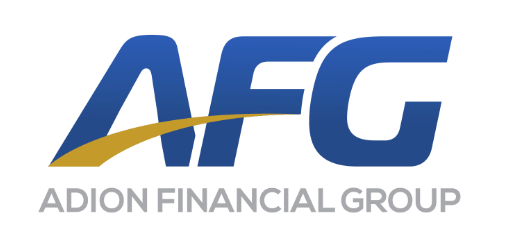How Subcontracting Affects Homebuilder Insurance Needs in Connecticut
See How We're Different
or call us: (888) 585-5188
How Subcontracting Affects Homebuilder Insurance Needs in Connecticut
25 May 2025

In the competitive landscape of homebuilding, subcontracting has become a common practice among builders in Connecticut. This approach allows homebuilders to focus on their core competencies while leveraging the specialized skills of subcontractors. However, while subcontracting can enhance efficiency and project quality, it also introduces complexities, particularly in the realm of insurance. Understanding how subcontracting affects insurance needs is crucial for homebuilders to protect their investments and ensure compliance with state regulations.
The Role of Subcontracting in Homebuilding
Subcontracting involves hiring external professionals to perform specific tasks within a construction project. This practice is prevalent in homebuilding, where specialized skills such as plumbing, electrical work, and roofing are often required. By subcontracting these tasks, homebuilders can streamline operations, reduce costs, and improve project timelines.
Benefits of Subcontracting
One of the primary advantages of subcontracting is the ability to tap into specialized expertise. Subcontractors often possess a wealth of experience and knowledge in their respective fields, which can lead to higher quality work. Additionally, subcontracting can provide flexibility in managing labor costs, as builders can adjust the number of subcontractors based on project demands.
Moreover, subcontracting allows homebuilders to focus on overall project management rather than getting bogged down in the minutiae of every trade. This can lead to improved efficiency and better allocation of resources, ultimately benefiting the project’s bottom line. For instance, a general contractor can concentrate on coordinating schedules, managing budgets, and ensuring that the project adheres to local building codes, while subcontractors handle their specialized tasks with precision and expertise.
Furthermore, subcontracting can foster innovation within the homebuilding industry. Many subcontractors stay updated with the latest technologies and techniques in their fields, which can lead to the incorporation of modern solutions into home designs. For example, a subcontractor specializing in energy-efficient systems can introduce advanced insulation methods or smart home technologies that enhance the overall value and sustainability of a new home.
Risks Associated with Subcontracting
Despite its benefits, subcontracting carries inherent risks. One significant concern is the potential for liability issues. If a subcontractor makes a mistake that leads to property damage or injury, the homebuilder may still be held responsible. This liability can extend to financial repercussions, legal fees, and damage to reputation.
Additionally, relying on subcontractors can complicate insurance needs. Homebuilders must navigate various coverage options to ensure they are adequately protected against potential claims arising from subcontracted work. Understanding these insurance implications is crucial for any builder operating in Connecticut. It’s essential for homebuilders to conduct thorough due diligence when selecting subcontractors, ensuring they have the necessary licenses, insurance, and a solid track record of performance. This proactive approach can mitigate risks and enhance the overall success of the project.
Moreover, communication can become a challenge when multiple subcontractors are involved. Misunderstandings or misalignments in expectations can lead to delays and increased costs. Therefore, establishing clear lines of communication and regular check-ins can help maintain alignment among all parties involved. Utilizing project management software can also facilitate better coordination and transparency, allowing everyone to stay informed about progress and any potential issues that may arise during the construction process.
Understanding Homebuilder Insurance in Connecticut
Homebuilder insurance is designed to protect builders from various risks associated with construction projects. In Connecticut, builders must adhere to specific insurance requirements to operate legally and safely. These requirements can vary based on the size of the project, the number of employees, and the types of subcontractors involved.
Types of Insurance Coverage
Homebuilders typically require several types of insurance coverage, including general liability insurance, workers' compensation insurance, and builder's risk insurance. General liability insurance protects against claims of bodily injury or property damage that may occur during construction. Workers' compensation insurance covers medical expenses and lost wages for employees injured on the job, while builder's risk insurance provides coverage for damage to the construction site itself.
When subcontractors are involved, additional coverage may be necessary. Builders should consider obtaining subcontractor liability insurance, which can help mitigate risks associated with subcontracted work. This type of coverage ensures that the builder is protected in the event that a subcontractor's actions lead to a claim. Additionally, builders might also explore professional liability insurance, which can safeguard against claims related to design errors or negligence, further enhancing their risk management strategy.
Legal Requirements in Connecticut
Connecticut has specific legal requirements for homebuilders regarding insurance. Builders must carry general liability insurance with a minimum coverage limit, and workers' compensation insurance is mandatory for any business with employees. Failure to comply with these regulations can result in fines, legal action, and loss of licenses.
Furthermore, when subcontractors are involved, builders should ensure that these professionals also carry appropriate insurance. This not only protects the builder but also helps to create a safer work environment. Builders should request proof of insurance from subcontractors before beginning any work to avoid potential liabilities. It is also advisable for builders to stay informed about changes in state regulations or industry standards, as these can impact their insurance needs and overall risk exposure. Regular consultations with insurance professionals can provide valuable insights and help builders navigate the complexities of their coverage requirements effectively.
The Impact of Subcontracting on Insurance Needs
Subcontracting can significantly alter the insurance landscape for homebuilders. As the number of subcontractors increases, so do the complexities of managing insurance coverage. Builders must carefully assess their insurance needs to ensure they are adequately protected against potential risks associated with subcontracted work.
Increased Liability Exposure
One of the most significant impacts of subcontracting on insurance needs is the increased liability exposure. When subcontractors are involved, builders may face additional risks related to their work. If a subcontractor fails to meet safety standards or makes an error that results in injury or property damage, the homebuilder may be held liable.
This heightened liability exposure necessitates a thorough review of existing insurance policies. Builders should consider increasing their general liability coverage limits to account for potential claims arising from subcontractor work. Additionally, exploring umbrella insurance policies can provide an extra layer of protection against unforeseen liabilities. Such policies can be particularly beneficial in high-stakes projects where the financial implications of a lawsuit could be devastating, allowing builders to proceed with confidence in their coverage.
Insurance Requirements for Subcontractors
When subcontracting, it is essential for homebuilders to ensure that their subcontractors have adequate insurance coverage. This includes verifying that subcontractors carry general liability insurance, workers' compensation insurance, and any other relevant policies. By doing so, builders can mitigate risks and ensure that they are not left holding the bag in the event of a claim.
Moreover, builders should include insurance requirements in their contracts with subcontractors. This ensures that all parties understand their responsibilities regarding insurance coverage and helps to establish clear expectations. It also provides builders with legal recourse if a subcontractor fails to maintain proper insurance. Furthermore, builders may want to consider conducting regular audits of subcontractor insurance policies to ensure ongoing compliance, as insurance coverage can change over time. This proactive approach not only protects the builder but also fosters a culture of accountability and safety among all parties involved in the construction process.
In addition to verifying insurance coverage, builders should also take the time to educate subcontractors about the importance of risk management and safety protocols. By fostering open communication and collaboration, builders can create a more cohesive working environment that prioritizes safety and minimizes potential liabilities. Workshops or training sessions can be beneficial in reinforcing best practices and ensuring that all subcontractors are aligned with the builder's standards and expectations. This collaborative effort can ultimately lead to a smoother construction process and a higher quality end product, benefiting both builders and homeowners alike.
Strategies for Managing Insurance Needs
To effectively manage insurance needs in the context of subcontracting, homebuilders in Connecticut should consider implementing several strategies. These strategies can help streamline the insurance process and ensure that builders are adequately protected against potential risks.
Conducting Regular Risk Assessments
Regular risk assessments are essential for identifying potential liabilities associated with subcontracting. Builders should evaluate the types of work being subcontracted and the associated risks. This assessment can help determine whether additional insurance coverage is necessary and guide decisions regarding subcontractor selection.
By proactively identifying risks, builders can make informed decisions about their insurance needs and take steps to mitigate potential liabilities. This may include increasing coverage limits, obtaining additional policies, or implementing safety protocols to reduce the likelihood of accidents. Furthermore, it is beneficial for builders to stay updated on industry trends and regulatory changes that may impact their risk landscape. Engaging with insurance professionals to review and adapt risk management strategies regularly can lead to more tailored and effective insurance solutions.
Establishing Clear Contracts with Subcontractors
Clear contracts with subcontractors are crucial for managing insurance needs. These contracts should outline the responsibilities of each party regarding insurance coverage, including the types of insurance required and the minimum coverage limits. Additionally, contracts should include indemnification clauses that protect the builder from liabilities arising from the subcontractor's work.
Establishing clear communication with subcontractors about insurance expectations can help prevent misunderstandings and ensure that all parties are on the same page. This proactive approach can save time, money, and potential legal complications down the line. Moreover, it is advisable for builders to conduct thorough background checks on subcontractors to assess their insurance history and claims record. This due diligence can further minimize risk and enhance the overall safety and reliability of the construction project. By fostering a culture of transparency and accountability, builders can build stronger partnerships with subcontractors, ultimately leading to more successful project outcomes.
Conclusion
Subcontracting is an integral part of the homebuilding process in Connecticut, offering numerous benefits while also introducing unique challenges. Understanding how subcontracting affects insurance needs is essential for builders looking to protect their investments and comply with state regulations.
By recognizing the increased liability exposure, ensuring that subcontractors carry adequate insurance, and implementing effective risk management strategies, homebuilders can navigate the complexities of subcontracting with confidence. Ultimately, a proactive approach to insurance can help builders safeguard their projects and maintain a strong reputation in the competitive homebuilding market.








